Yes. See all of our shows and showtimes here.
Yes. The Nature Nook is now open.
Yes. We ask that you move through the Museum within the group you arrived with, and stay at least 6 feet away from other groups at the Museum.
No. The City of Hastings mask requirement for city buildings has been discontinued. It is up to the individual employee to wear a mask or not wear one. We have Plexiglas barriers at our visitor check-in areas.
No. The City of Hastings mask requirement for city buildings has been discontinued. It is up to individual patrons if they would like to wear a mask.
No. They are covered due to the pandemic. But, you are allowed to bring bottles of water into the Museum.
Yes. The largest bank of restrooms is located in the basement, on the Theatre’s side of the building. There are also smaller restrooms on the main floor within the Museum, on the second floor just off the elevator, and in the basement near the Kool-Aid: Discover the Dream exhibit.
- Items related to the Hastings Naval Ammunition Depot including personal stories and images, land sale contracts, employment records, tools, and safety gear
- Items related to the growth and development of Hastings and Adams County
- Model 1860 Henry Repeating Rifle
- Colt Single Action Army revolver patented in 1875
- Perkins Products Company items, including Onor-Maid products
- Pawnee artifacts with clear history and title
- Taxidermy mounts of beaver, white-tail deer, mule deer, prairie dog, skunk, raccoon, ground squirrels, and opossum
- Pre-2000 military dress uniforms and accessories
- Clothing, shoes, accessories, and toiletry items dating before 1950
- Wedding dress or suites from any time period
- Most weapons unless it is model 1860 Henry Repeating Rifle or a Colt Single Action Army revolver patented in 1875
- China, glassware, silver unless it is a complete or nearly complete set
- Clocks and watches
- Furniture and household accessories
- Agricultural equipment and tools
- Tools for woodworking, leatherworking, masonry, metal working, mechanical repairs, and animal husbandry
- Spinning wheels, sewing machines, looms and other textile/sewing equipment
- Food processing equipment including jars, pressure cookers, and cutting tools
- Office and business equipment including, calculators, adding machines, typewriters, and computers
- Electronics including radios, televisions, telephones, musical playback equipment, and cameras
- Medical equipment and tools
- Optics including telescopes, microscopes, cameras, binoculars, and glasses
- Scales and weights
- Musical instruments including pianos and organs
- Transportation devices and accessories including lap robes, buggies, wagons, cars, and bicycles
- Newspapers
- Coins or currency
- Animals skins or bodies
- Rocks and minerals
- Fossils that do not have site information and not related to Nebraska’s prehistory
- Archeological material without clear site information or illegally collected
- American Indian artifacts without a clear history of ownership or illegally collected
No matter how carefully we eat, we occasionally spill or drop crumbs. While we make every effort to keep the build clean, small bits can find their way into cracks and crevices. Pests looking for food can find these morsels causing them to travel further into the building looking for more. Once in the building, they look for places to live and reproduce causing an infestation.
While we could use chemicals to control pests, we choose to trap and monitor as much as possible. Monitoring rather than spraying, creates a healthier environment for people and artifacts that we are trying to save for future generations.
Along with potentially attracting pests, spills can also penetrate into cases, causing damage to artifacts.
In the past, Brooking himself paid for many artifacts to build the collection. After his passing, the Museum occasionally was given money to purchase items but the frequency declined over the years as the budget has become tighter. We have enjoyed some significant donations of money for the purpose of buying items for specific areas of the collection. For example, Kraft Foods donated money to but Kool-Aid material as we geared up to develop the original exhibit.
When Albert Brooking started collecting, his main goal was to make sure he collected the past history before it was lost. He was less concerned with how many of a type of item he had and often took people’s hobby collections such as ear trumpets or salt and pepper shakers.
Today, we continue to collect history but have to be more mindful of how many duplicates we have in order to be financially responsible. This means we cannot take things that we already have represented in the collections.
It is hard to determine an exact number for each artifact because some items need more care and protection than others. However, on average it costs the Museum between $80 and $100 to process each new item donated to the collection. This includes the staff time to document, clean, number, and create a storage container, plus the average cost of preservation materials such as acid free boxes, tissue, and ethafoam.
Once part of the collection, the average cost of upkeep for each item equals about $3 per year. This includes monitoring for pests and climate, maintaining climate control systems, utility expenses, and general cleaning and upkeep of the facility. This does not include staff time or expenses to address equipment failure, replacing storage containers that have become acidic, or cleaning and maintaining exhibit cases.
In the early years of the Museum, the founder, Albert Brooking, collected just about anything. Many items were donated, a few were traded for, and some were purchased out of Brookings own money. This practice filled two school buildings to the brink as well as the original Museum building. In recent years, we have become more selective as to what we accept for the collection because of our limited space and resources to properly care for precious artifacts.

